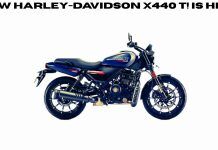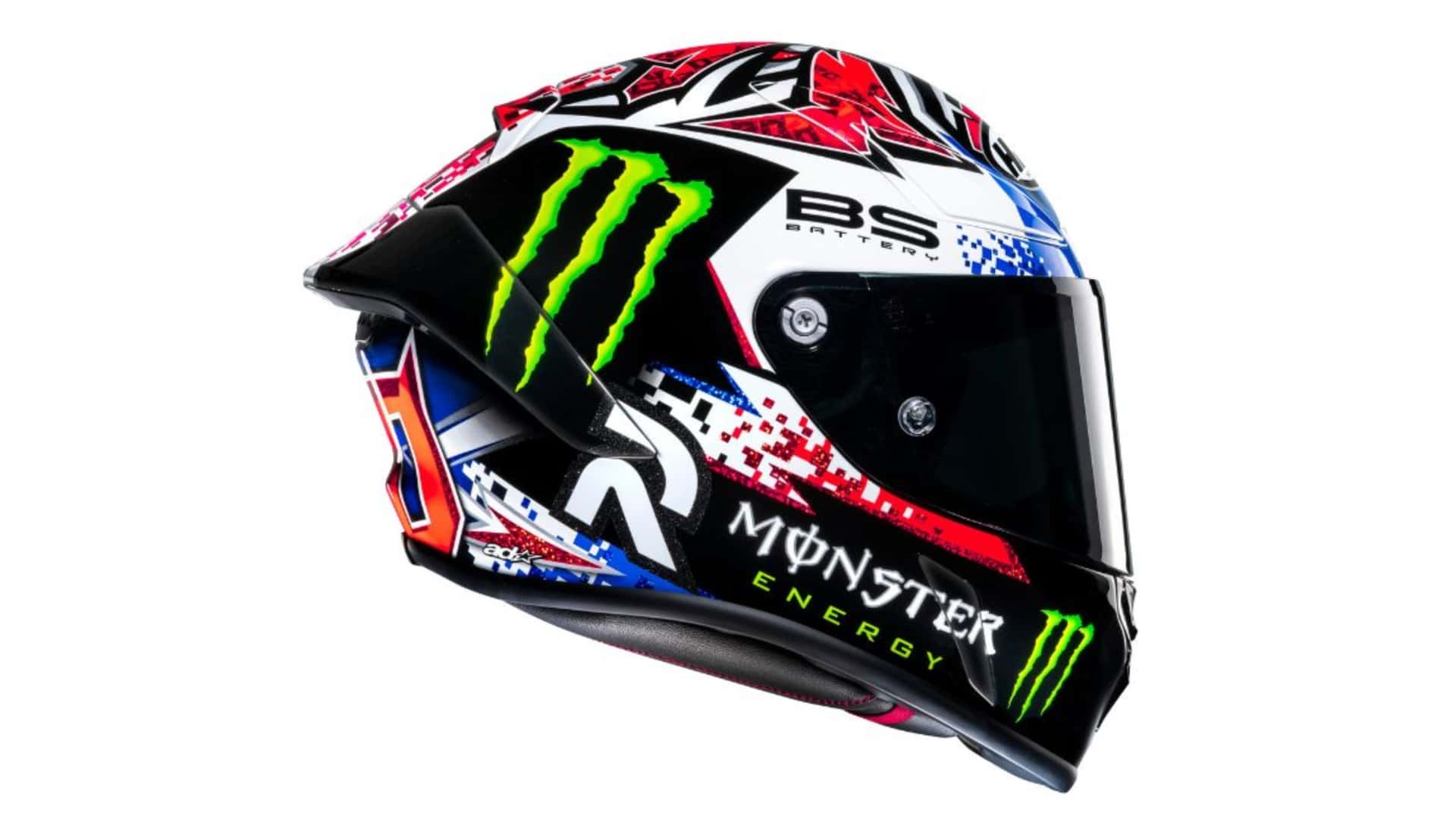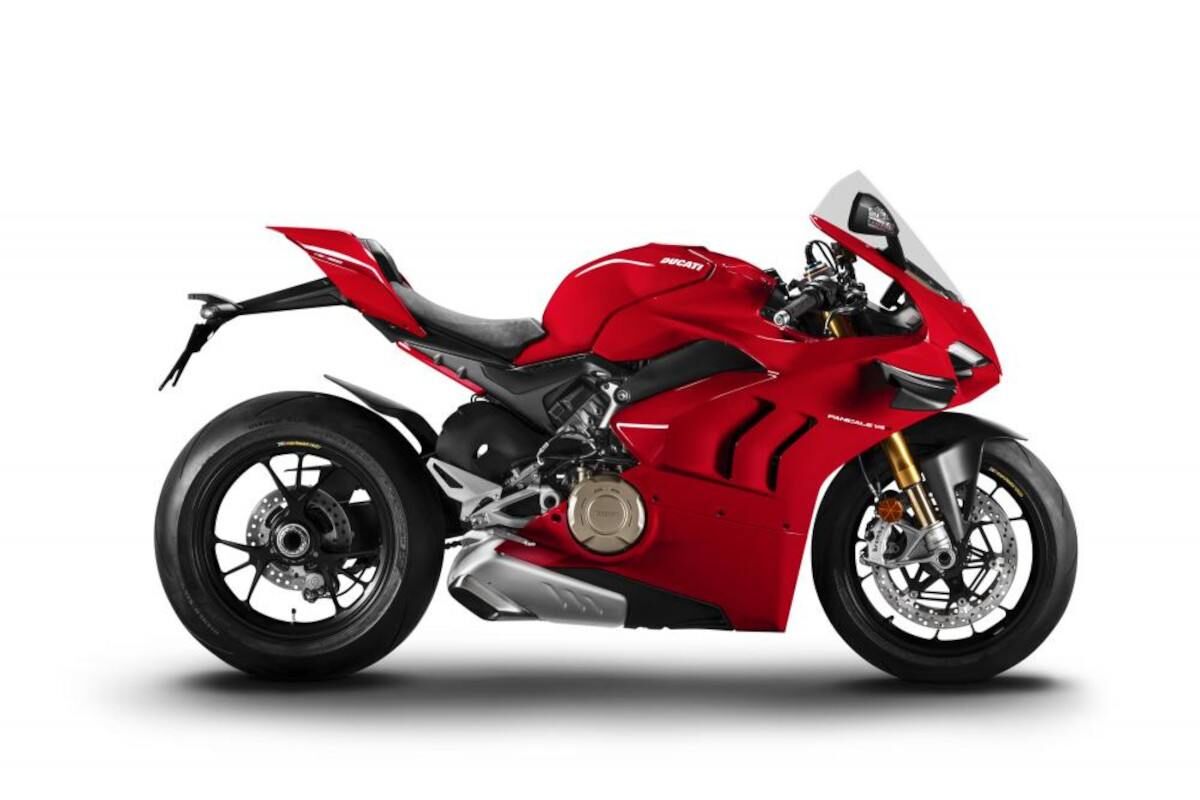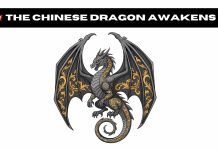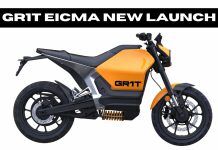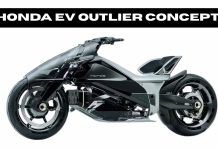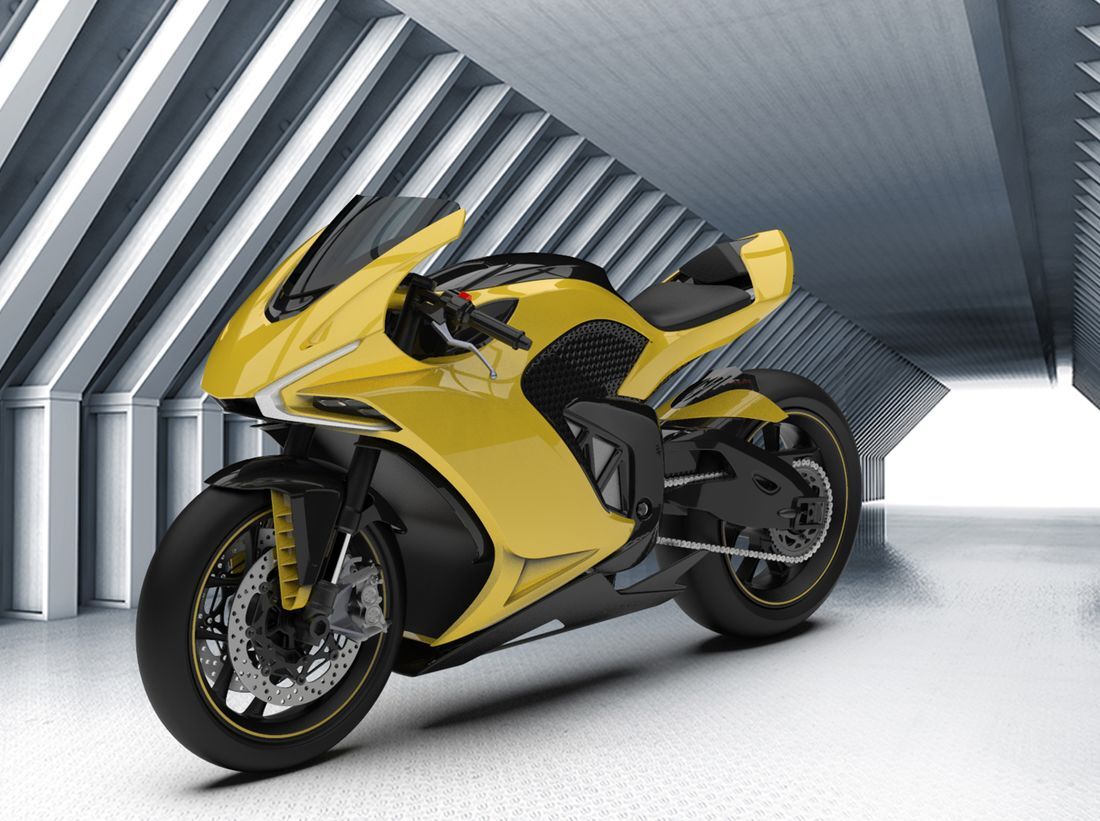Executive Summary
The motorcycle industry has undergone a profound transformation over the past five decades, evolving from a market dominated by internal combustion engines (ICE) and utility-focused designs to a complex, technologically advanced, and increasingly diversified landscape. The 1970s marked the ascendancy of Japanese manufacturers, who redefined global standards for performance, reliability, and affordability, leading to the decline of traditional European brands. This era also saw the birth of the “superbike” and the formalization of the touring segment, signaling a shift towards recreational use. The 1980s introduced early electronic integration with technologies like electronic fuel injection (EFI) and anti-lock braking systems (ABS), while market segmentation became a strategic imperative amidst economic challenges. The 1990s were characterized by intense “speed wars” driven by advancements in lightweight materials and chassis design, alongside a resurgence of European brands.
The new millennium, particularly the 2000s, laid the digital foundation with widespread adoption of EFI and the introduction of the Inertial Measurement Unit (IMU), enabling more sophisticated rider aids. This period also witnessed the explosive growth of Asian markets as global consumption and manufacturing powerhouses. The 2010s saw the maturation of “smart” motorcycles with advanced rider assistance systems (ARAS) and the definitive entry of major manufacturers into the electric vehicle (EV) space, driven by changing demographics and environmental concerns.
Currently, the 2020s are solidifying the electric motorcycle as the inevitable future, integrating artificial intelligence (AI), enhanced connectivity, and a focus on sustainable mobility solutions. Throughout these decades, stringent global regulations, particularly in emissions and safety, have consistently compelled innovation, while evolving consumer preferences across generations have necessitated agile product development and highly tailored regional strategies. The industry’s future is poised for further electrification, advanced intelligence, and continued specialization to meet diverse global demands.
Introduction: A Half-Century on Two Wheels
The motorcycle industry, with its intricate connections to the automotive and aviation sectors, has historically served as a dynamic hub of innovation and a significant contributor to economic growth. Its evolution offers valuable insights into broader technological and industrial shifts. From its early days as a utilitarian mode of transport, the motorcycle has transformed into a sophisticated machine that caters to a wide spectrum of personal, recreational, and commercial needs. Understanding the long-term trends within this industry is crucial for strategic foresight, enabling stakeholders to anticipate future challenges and opportunities. 1
This report provides a comprehensive examination of motorcycle trends from the 1970s through the 2020s. It delves into the significant shifts in market dynamics, the relentless pace of technological advancements, the evolution of design philosophies, changing consumer behaviors, and the pervasive influence of regulatory frameworks that have collectively shaped the industry over the past five decades. By analyzing these interconnected elements, a clearer picture emerges of the forces driving the industry’s past, present, and future trajectory.
The 1970s: The Rise of Japanese Dominance and the Superbike Era
Market Dynamics: The Japanese Ascendancy and European Decline
The 1970s marked a profound and irreversible shift in the global motorcycle manufacturing landscape. This decade witnessed the dramatic rise of the “Japanese Big Four”—Honda, Kawasaki, Suzuki, and Yamaha—who collectively redefined industry benchmarks. These manufacturers introduced motorcycles that offered a compelling combination of superior performance, enhanced quality, exceptional reliability, and improved fuel economy, all at significantly more competitive prices than their Western counterparts. This competitive advantage ignited what has been described as a “bona fide arms race” among manufacturers, pushing the boundaries of motorcycle engineering and production.1
1972 Kawasaki 750cc H2
The overwhelming success of Japanese manufacturers was not merely a matter of competitive pricing; it stemmed from a foundational industrial advantage and a proactive approach to market needs. Japanese firms leveraged wartime precision manufacturing and management experience, coupled with a deep understanding of mass production and die-casting techniques, to produce higher-quality, more reliable motorcycles at an unprecedented scale. This enabled them to develop products technologically equivalent to European models at a lower cost.3 Conversely, the British motorcycle industry, once a global leader, found itself on the precipice of collapse. Plagued by outdated factories, insufficient investment, and a reactive strategy that involved a “segment retreat” from smaller-displacement markets, British brands struggled to compete. This created a void that Japanese firms expertly filled, fundamentally redefining industry benchmarks and outmaneuvering complacent Western competitors.4
In parallel with their product dominance, Japanese manufacturers also pursued aggressive global expansion. Honda, for instance, established significant manufacturing bases in Brazil (Honda Motor do Brasil in 1971, Moto Honda da Amazonia in 1975) and the United States (Honda of America Manufacturing in 1978). This strategic move towards localized production in key markets represented a pivotal step in the globalization of motorcycle manufacturing, a trend that would become a defining characteristic of the broader automotive industry.6
Technological Advancements: The Birth of the Superbike and Touring Segment
The 1970s were a fertile ground for technological innovation in motorcycles. A landmark moment arrived with the Honda CB750, introduced in 1969, which quickly earned the moniker of the world’s first “superbike.” This model set new industry standards with its revolutionary inline-four engine, advanced disc brakes, and convenient electric starter, profoundly influencing subsequent motorcycle designs across the globe.2 The success of the CB750 demonstrated a mass market appetite for high-performance yet reliable machines, effectively democratizing the superbike concept and ushering in an era of Japanese dominance.10
Beyond the superbike, the decade also saw the emergence of other iconic models that would shape future segments. The Kawasaki Z1, introduced in 1972, directly challenged the long-standing dominance of European sport bikes, further solidifying Japan’s position in the high-performance arena.2 Simultaneously, Honda pioneered the dedicated touring motorcycle segment with the introduction of the GL1000 Gold Wing in 1975. This model, with its large engine and emphasis on comfortable features, quickly became the gold standard for long-distance riding, proving the viability of specialized touring bikes.2 The shift from purely utilitarian transport to motorcycles as recreational and lifestyle vehicles was clearly signaled by the success of these category-defining machines, a trend that would accelerate significantly in subsequent decades. Further innovations included the Benelli Sei, the first production motorcycle with a six-cylinder engine, and the BMW R100RS (1977), which was notable for being the first production bike to feature a full fairing.2
Design Evolution: Functionality Meets Emerging Style
Motorcycle design in the 1970s began to evolve beyond pure functionality, incorporating more angular forms that diverged from the predominantly round aesthetics of earlier eras.2 This period saw the widespread adoption of the “Universal Japanese Motorcycle” (UJM) template. Characterized by an upright seating position, carbureted air-cooled engines housed within steel-tube cradle frames, and the inclusion of a front disc brake, the UJM made motorcycling more accessible to a broader audience due to its simplicity, reliability, and affordability.14 The “café racer” culture, which had emerged in the UK in the 1950s and 1960s, continued to influence design, emphasizing modifications for improved speed and handling, reflecting a growing desire for performance-oriented aesthetics.7
Consumer Preferences: Expanding the Rider Base
Consumer preferences in the 1970s were influenced by both product innovation and external pressures. Honda actively sought to cultivate new market segments, notably targeting female users with models like the Road Pal (1976). This model’s popular price point and ease of use successfully attracted many women, demonstrating a conscious effort by manufacturers to expand the traditional rider base.6 Overall, there was a growing demand for vehicles that were not only clean but also fuel-efficient, a preference shaped by the decade’s economic realities.6
Regulatory Impact: Early Environmental and Safety Directives
The 1970s marked the nascent stages of significant regulatory influence on the motorcycle industry. The rise of emission regulations, exemplified by the U.S. Clean Air Act of 1970, compelled manufacturers to innovate in engine technology. Honda’s development of the CVCC engine for its Civic, which allowed compliance with these stringent standards, set a precedent for cleaner vehicle development across the broader automotive and motorcycle industries.6 This period demonstrated that economic and policy shifts could force rapid industry adaptation, pushing manufacturers towards more fuel-efficient and cleaner technologies, even if initial power outputs were sometimes compromised.16
Safety regulations also began to take hold, with the introduction of mandatory helmet use for motorcycles in many regions.6 Concurrently, there was a concerted effort to develop and promote rider education programs, aiming to improve overall motorcycle safety.17 Additionally, noise regulations started to influence motorcycle design and manufacturing processes, leading to significant efforts by manufacturers to reduce the sound output of their machines.18
The 1980s: Performance, Diversification, and Early Electronic Integration
Market Dynamics: Segment Definition and Economic Headwinds
The 1980s presented a complex economic environment for the motorcycle industry, characterized by recession and inflation. These challenges compelled manufacturers to meticulously re-evaluate their product strategies and adapt to evolving market segments.19 This period saw a deliberate move away from the “Universal Japanese Motorcycle” (UJM) paradigm, which had dominated the previous decade. The UJM, a general-purpose road bike, began to decline as the market fragmented and manufacturers developed more specialized, niche products.14
Despite the economic uncertainties, Honda played a pivotal role in formally defining and establishing several distinct motorcycling segments. These included touring, sport bikes, cruisers, standards, dual-sport, and off-road motorcycles.19 This strategic shift towards specialized offerings allowed companies to cater to diverse rider needs and preferences, effectively laying the foundation for the highly fragmented and specialized market observed today. Even traditional American manufacturers like Harley-Davidson, after a challenging period under AMF ownership, saw a return to innovative designs, with models like the FXRS Super Glide II paving the way for future cruiser lines.20
The economic pressures, coupled with increasing competition and a maturing market where a “one-size-fits-all” approach was no longer sufficient, forced manufacturers to become more customer-centric and specialized. This transition from mass-market homogeneity to targeted niche products indicated an industry moving from its expansion phase to a more refined, competitive landscape, where understanding specific rider needs became paramount for sustained growth.
1980 Suzuki GSX250E
Technological Advancements: The Dawn of Electronics and Enhanced Performance
The 1980s marked a critical transition in motorcycle engineering: the nascent integration of electronics. Electronic Fuel Injection (EFI) began to revolutionize the motorcycle world, offering unprecedented precise control over engine performance. This innovation significantly improved fuel efficiency, increased power output, and enhanced overall reliability.21
A major leap in safety technology occurred with the introduction of Anti-lock Braking Systems (ABS). BMW pioneered this technology on its K100 series in 1988, providing a crucial safety feature that prevented wheel lock-up during sudden braking and improved rider control.21 While still in their early forms, rudimentary Traction Control (TC) systems also began to emerge, though their widespread adoption and sophistication would materialize in later decades.21 These early electronic implementations, often adapted from automotive systems, represented a fundamental shift in how performance and safety could be managed, laying the groundwork for the “smart” motorcycles of the 21st century.
Beyond electronics, significant advancements in suspension technology also improved handling and stability. Innovations such as inverted forks and monoshocks, exemplified by Honda’s Pro-Link suspension, became more prevalent.19 Honda further pushed engine technology with the introduction of the first modern V-4 motorcycle engine in 1982 and even experimented with turbocharged production street bikes, such as the CX500 Turbo.19 This decade represents the foundational shift towards electronic control. Unlike earlier mechanical innovations, these systems relied on sensors and computing, marking the beginning of the motorcycle as a complex, electronically managed machine. The fact that they were initially adapted from automotive technology highlighted the interconnectedness of these industries and the transfer of capabilities, establishing the essential groundwork for the sophisticated rider aids and connectivity that would define future decades.
Design Evolution: The Rise of the Sportbike Aesthetic
The 1980s witnessed the definitive rise of the sportbike aesthetic. Japanese brands actively marketed “race bikes for the street,” leading to a widespread “sportbike craze.” The design of these machines was increasingly defined by aerodynamic plastic fairings, which became a hallmark of the era’s high-performance motorcycles.20 Concurrently, a counter-cultural “streetfighter” aesthetic began to emerge. This style often originated from riders removing damaged fairings from their sportbikes, resulting in a stripped-down, aggressive, and minimalist look. This raw aesthetic would later be adopted by manufacturers themselves.32 BMW also contributed to the evolving design landscape with the K1, a high-speed sport-tourer featuring a distinctive full fairing and advanced aerodynamic properties.28
Consumer Preferences: Craving Performance and Diversity
Fueled by the technological advancements of the decade, consumers developed an increased interest in high-performance machines.20 This growing demand for specialized capabilities further propelled the segmentation of the market, moving away from the more general-purpose “Universal Japanese Motorcycle” concept that had previously dominated.14 Riders sought bikes tailored to specific riding styles, whether for speed, touring, or off-road adventures.
Regulatory Impact: Safety Education and Emissions Focus
Rider education remained a central pillar of motorcycle safety efforts throughout the 1980s. Motorcycle-rights organizations actively promoted rider training as a preferred alternative to universal helmet laws, advocating for education over mandates.17 Concurrently, the Environmental Protection Agency (EPA) introduced more stringent regulations, which compelled manufacturers to focus on improving fuel efficiency and reducing emissions in their motorcycle designs.22 These regulatory pressures, while sometimes seen as constraints, consistently pushed the industry towards more responsible and technologically advanced solutions.
The 1990s: Speed Wars, Lightweight Design, and European Resurgence
Market Dynamics: The Pursuit of Speed and Shifting Competitiveness
The 1990s were largely defined by an intense “speed war” among motorcycle manufacturers, particularly the Japanese giants. This era saw a relentless pursuit to produce the fastest production motorcycle, with iconic models like the Kawasaki ZZR1100, Honda CBR1100XX, and the Suzuki Hayabusa, which famously reached speeds of 194 mph, pushing the boundaries of performance.33
This decade also marked a significant resurgence for traditional European brands, which began to challenge the Japanese dominance in specific segments. Ducati, with its iconic 916 model, Triumph with the Tiger 900, and KTM with the Duke, re-established their presence and carved out niche markets with distinctive designs and performance characteristics.9 Concurrently, the Japanese domestic market experienced saturation, prompting manufacturers to diversify their product portfolios into niche segments such as adventure touring and cruisers, and to actively explore new global markets for growth.35
The “speed wars” of the 1990s, while seemingly about raw power, were fundamentally driven by parallel advancements in material science and chassis design. The ability to make motorcycles significantly lighter and stiffer through the adoption of aluminum frames and carbon fiber components allowed for not only higher speeds but also dramatically improved handling. This transformation reshaped superbikes from “boxy and big” to “sleek, tech-savvy, and agile”.34 This period underscored that incremental gains in performance were increasingly reliant on holistic engineering, optimizing the entire motorcycle package rather than just focusing on engine output.
1990 Ducati Superlight
Technological Advancements: Lightweighting and Refinement
The emphasis on lightweight design became a crucial technological imperative in the 1990s. The Honda CBR900RR Fireblade exemplified this trend, redefining supersport motorcycles by prioritizing a low weight as much as raw power output.33 This commitment to weight reduction enabled greater maneuverability and agility, fundamentally changing the riding experience.
Advancements in frame materials gained significant traction. The pioneering work on modern aluminum perimeter frame chassis by Antonio Cobas in 1982 became widely adopted by major motorcycle manufacturers throughout the 1990s, offering superior rigidity and lighter weight compared to traditional steel frames.37 Early applications of carbon fiber fairings, seen on bikes like the Honda NR 750, hinted at the future of lightweight, high-strength composites in motorcycle construction.34
Suspension systems continued their evolution with the widespread adoption of USD (Up Side Down) forks, which offered increased stiffness and improved handling, and the refinement of cantilever rear suspension systems.36 Water cooling also became increasingly common for internal combustion engines, allowing for more consistent engine temperatures and tighter tolerances, which contributed to both performance and longevity.36 Towards the end of the decade, in 1998, the Lectra was introduced as the first electric motorbike, marking the very nascent stages of the industry’s eventual shift towards electrification.9
Design Evolution: Sleek Superbikes and the Naked Aesthetic
The design of superbikes underwent a significant transformation in the 1990s, shedding their “boxy and big” appearance for a “sleek, savage, and stunning” aesthetic driven by improved aerodynamics.34 This shift created machines that looked fast even when stationary. Concurrently, the “streetfighter” look, which originated from riders stripping damaged fairings from sportbikes, gained considerable traction. This raw, aggressive style eventually led manufacturers to produce “naked” bikes, catering to a growing demand for minimalist, performance-oriented machines.32 Despite the focus on modern performance, retro and vintage designs also began to gain popularity, blending classic aesthetics with contemporary features to appeal to a different segment of riders.39
Consumer Preferences: Performance and Customization Drive Demand
Consumer demand in the 1990s was increasingly driven by a desire for performance and personalization. A market emerged for smaller-capacity versions of large sportbikes, catering to a younger demographic eager to experience the thrill of high-performance machines in a more accessible format.33 Furthermore, customization became a significant trend, allowing riders to personalize their motorcycles to reflect their individual style and preferences, fostering a deeper connection with their machines.8
Regulatory Impact: Continued Safety Focus
Regulatory efforts in the 1990s continued to emphasize motorcycle safety. The “Motorcycles and You” (MAY) motorist awareness campaign was widely adopted by most states, underscoring the ongoing focus on promoting rider safety through public education.17 However, a notable shift in regulatory approach occurred in the United States when Congress repealed the universal helmet law requirement in 1995, indicating a move away from federal mandates towards state-level discretion or voluntary adoption of safety measures.17
The 2000s: Digital Foundations and the Dawn of Electrification
Market Dynamics: Globalization Deepens and Asia Rises
The dawn of the new millennium ushered in an era of unprecedented geographical expansion for the motorcycle industry. Asian markets, particularly China, India, and Southeast Asian countries, emerged as both massive consumer bases and formidable manufacturing powerhouses. This period witnessed an explosive growth in global annual production volumes, which more than doubled between 2000 and 2010.41
India’s motorcycle market experienced particularly explosive growth, fueled by rising disposable incomes and rapid urbanization. This led to a significant shift from two-stroke to four-stroke engines, primarily driven by government regulations on pollution control, which gradually phased out the less environmentally friendly two-stroke models. Concurrently, the market share of mopeds in India declined significantly, with motorcycles becoming the primary drivers of growth.35 While the U.S. motorcycle market enjoyed relative stability through the mid-2010s, it experienced a noticeable downturn from 2023 onwards, influenced by economic conditions and an aging demographic of traditional riders.42
Technological Advancements: Electronics Become Standard
The 2000s were the decade where electronic systems transitioned from niche innovations to foundational components in motorcycle design and function. Electronic Fuel Injection (EFI) became a widespread standard, effectively replacing carburetors across mass-produced motorcycles by the early 2000s. For instance, Harley-Davidson completed its full transition to EFI by 2008.23 The widespread adoption of EFI meant more precise engine management, leading to improved performance, fuel efficiency, and reliability, while also simplifying tuning and cold starting.43
A pivotal introduction was the Inertial Measurement Unit (IMU), which first appeared in the late 2000s (e.g., Ducati 1098 in 2008).26 The IMU’s ability to measure multi-dimensional movement (yaw, roll, pitch, and acceleration) provided the crucial data layer necessary for advanced rider aids like cornering ABS and sophisticated traction control, fundamentally refining the operation of these systems.26 This marked a fundamental architectural shift: motorcycles were no longer just mechanical machines but complex electro-mechanical systems, laying the essential digital foundation for future “smart” features.
Beyond these foundational electronic systems, new technologies began to emerge, including cylinder deactivation (introduced by Harley-Davidson in 2008), the increasing use of lithium-ion batteries, Bluetooth connectivity for rider communication, and integrated full map navigation systems.45 In terms of chassis technology, aluminum monocoque frames were used for the first time on mass-produced motorcycles, notably on Kawasaki’s ZX-12R in 2000, further enhancing rigidity and reducing weight.37 Early advancements in rider comfort features, engine efficiency, and safety systems were also integrated, reflecting a holistic approach to motorcycle development.1
2000 Honda ST1100
Design Evolution: Technology-Driven Aesthetics and Early Electric Forms
Motorcycle design in the 2000s began to visibly integrate and reflect the advanced technology being incorporated into the machines. This led to aesthetics that hinted at the underlying electronic sophistication.1 Concurrently, early electric motorcycle designs started to emerge, signaling a growing interest and investment in alternative propulsion methods, even if these models were not yet mainstream.46 The increasing development in electric motorcycle technology became evident, though still in its nascent stages.1
Consumer Preferences: Efficiency and New Technologies
Consumer preferences in the 2000s were increasingly influenced by the growing emphasis on efficiency and the allure of new technologies. In India, the shift towards four-stroke engines was a direct response to new pollution control regulations and a clear consumer preference for more fuel-efficient models.35 Globally, there was a noticeable, albeit early, interest in and development of electric motorcycle technology, driven by a growing awareness of environmental concerns.1
Regulatory Impact: Stricter Emissions and Safety Standards
The 2000s saw the implementation of increasingly stringent environmental and safety regulations. The U.S. Environmental Protection Agency (EPA) introduced Tier 1 (2006) and Tier 2 (2010) exhaust emission standards for highway motorcycles, leading to further reductions in pollutants like hydrocarbons (HC), carbon monoxide (CO), and nitrogen oxides (NOx).37 In Europe, Euro 3 standards, introduced in 1999, effectively mandated the use of catalytic converters on four-stroke two-wheelers from 2006, followed by Euro 4 standards in 2017, which further tightened emission limits.48 On the safety front, the U.S. Congress passed the Safe Accountable Flexible Efficient Transportation Equity Act – A Legacy for Users (SAFETEA-LU) in 2006, which provided dedicated funds for motorcycle safety education and public awareness programs, reflecting a continued commitment to rider safety.17
The 2010s: Advanced Rider Aids, Adventure Boom, and Electric Acceleration
Market Dynamics: Demographic Shifts and Segment Growth
The 2010s presented a complex and evolving market landscape, largely shaped by significant demographic shifts. In the U.S., demand for motorcycles began to diverge: aging Baby Boomers, historically the core market for large, heavy, and expensive recreational bikes, showed declining interest. Simultaneously, Millennials, coming of age, exhibited increased interest in cheaper, lighter, and more accessible entry-level motorcycles.50 This demographic shift created a critical challenge for traditional manufacturers like Harley-Davidson, who responded by introducing smaller bikes and new rider training programs.50
Concurrently, the Adventure Touring (ADV) segment experienced explosive growth. This surge was driven by a rising demand for outdoor and sporting activities, coupled with a preference for versatile, multi-terrain motorcycles capable of both long-distance travel and off-road exploration. By the 2020s, the ADV segment accounted for over 30% of the global motorcycle industry.45 This period highlighted a stark divergence in market demand between developed and emerging economies. While developed markets saw a decline in traditional large recreational bikes due to aging demographics, they simultaneously fueled niche segments like adventure touring. Emerging markets, conversely, continued to drive volume growth for affordable, utilitarian two-wheelers.41 This indicated a global market that was not monolithic but required highly tailored regional strategies.
Globally, the motorcycle market maintained stable growth, with projections aiming for 70 million units by 2025. India, Pakistan, and Africa were identified as particularly promising growth markets, driven by urbanization and increasing disposable incomes.58
Technological Advancements: Smart Bikes and Electrification Takes Hold
The 2010s saw the motorcycle evolve from merely “electronic” to “intelligent.” Sophisticated electronic rider aids became widespread, significantly enhancing both safety and performance. These included advanced traction control, cornering ABS (which modulates braking force based on the bike’s lean angle), and wheelie control systems.45 The widespread integration of IMU-enabled rider aids transformed safety systems from reactive (like early ABS) to predictive and adaptive, allowing for intervention even while the motorcycle was leaned over in a turn.26
Automotive-level safety features began to appear on high-end motorcycle models, such as radar-assist systems providing adaptive cruise control, blind spot detection, and collision warnings.45 Furthermore, vehicle-to-vehicle (V2V) communication systems were adapted for motorcycles, hinting at a future of interconnected riding.59
Perhaps the most significant shift was the definitive acceleration of electrification. Major manufacturers, including Harley-Davidson (with its LiveWire model), BMW, and KTM, made their entry into the electric motorcycle market, combining their iconic designs with new electric powertrains.8 This move was supported by substantial advancements in battery technology, with lithium-ion becoming the dominant type, and the expansion of charging infrastructure, making electric motorcycles increasingly viable and appealing.45 This dual evolution pointed to a future where motorcycles are defined by their intelligence and environmental footprint, not just their engine size.
Design Evolution: Minimalism, Neo-Retro, and Adventure Focus
Motorcycle design trends in the 2010s gravitated towards clean, simple lines, often featuring solid colors with geometric accents and an emphasis on “negative spaces,” reflecting a minimalist aesthetic.64 The burgeoning popularity of adventure bikes influenced design, leading to more streamlined silhouettes and less angular forms, even for larger machines.64 Concurrently, neo-retro and scrambler styles gained significant popularity, successfully blending vintage looks with modern features to appeal to riders seeking a blend of classic aesthetics and contemporary performance.39
Consumer Preferences: Generational Divide and New Priorities
The aging of the traditional rider base (Baby Boomers) created a critical demographic challenge for the industry. This compelled manufacturers to actively court younger generations, particularly Millennials, who exhibited fundamentally different values and preferences. Millennials showed a distinct preference for smaller, more maneuverable motorcycles, as well as retro-styled bikes, cafe racers, and scramblers. They valued individuality, customization, and increasingly, environmental credentials in their purchasing decisions.50 This demographic pressure was a significant driver behind the diversification of offerings and the acceleration of electric vehicle development.
The median age of motorcyclists in the U.S. continued its upward trend, reaching 50 in 2018, while the percentage of female riders notably increased to 19%.66 This indicated a broadening of the rider demographic beyond traditional stereotypes.
Regulatory Impact: ABS Mandates and Emissions Evolution
Regulatory frameworks continued to exert significant influence on motorcycle design and manufacturing. ABS became mandatory for all new motorcycles over 125cc in the European Union by 2016, a regulation that rapidly accelerated its widespread adoption globally.25 This mandate significantly enhanced overall motorcycle safety. Furthermore, Euro 4 emission standards were introduced in 2017, further tightening the limits on pollutant emissions from internal combustion engines.48 These regulations, while sometimes perceived as burdensome, consistently compelled innovation and the integration of advanced technologies.
The 2020s: Sustainability, Connectivity, and Future Mobility
Market Dynamics: Electric Dominance and Urban Mobility Focus
The 2020s are solidifying the electric motorcycle as the inevitable future of the industry. The global motorcycle market continues its growth trajectory, with the Asia-Pacific region maintaining its overwhelming dominance, holding a 61.61% market share in 2024.51 Electric motorcycles are now a central trend, projected for significant growth with a Compound Annual Growth Rate (CAGR) of 19.9% from 2023-2030, potentially reaching $121.07 billion by 2030.63 This rapid expansion is driven by a powerful confluence of environmental concerns, supportive government incentives, and the increasing demand for efficient personal mobility and last-mile delivery services, particularly in urban areas.51 This shift is not merely an alternative but a fundamental redefinition of the market, impacting everything from manufacturing capabilities to charging infrastructure and consumer expectations, and disrupting traditional market dynamics.1
In contrast to the global growth, the U.S. market has experienced a noticeable downturn from 2023 onwards, with declining sales influenced by broader economic conditions, an aging demographic of traditional riders, and increasing competition from electric bicycles.42
Technological Advancements: AI, Connectivity, and Enhanced User Experience
The 2020s represent the maturation of the “smart motorcycle” concept, moving beyond basic electronic aids to truly intelligent, connected, and user-centric machines. Motorcycle engines continue to evolve with state-of-the-art technology, including variable valve timing and cylinder deactivation, which optimize power delivery, enhance fuel efficiency, and reduce emissions without sacrificing practicality.61
Cutting-edge safety features are being redefined with advanced rider assistance systems (ARAS) that include stability control, sophisticated cornering ABS, traction control, and radar-based adaptive cruise control systems that maintain safe distances from other vehicles.60 The integration of artificial intelligence (AI) and machine learning is also beginning to appear for predictive maintenance and smart ride modes, allowing bikes to adapt to riding habits and conditions.60 This suggests a future where motorcycles are not isolated vehicles but integral nodes in a broader intelligent transportation ecosystem, fundamentally altering safety, navigation, and the overall riding experience.73
Connectivity features are expanding rapidly, with seamless smartphone integration via Bluetooth, advanced GPS navigation with real-time traffic updates, remote diagnostics capabilities, and Over-the-Air (OTA) software updates, ensuring motorcycles are always running the latest software.45 Comfort features have also seen significant enhancements, including ergonomically designed seats for all-day comfort, electronically adjustable suspension systems that cater to different riding styles, and advanced windshield designs that reduce rider fatigue.61 Looking further ahead, futuristic concepts include hydrogen-powered bikes, augmented reality (AR) helmets projecting vital information, and virtual reality (VR) applications for rider training.9
Design Evolution: Sculptural Forms and Retro Revival
Motorcycle designs in the 2020s are becoming more dramatic, sculptural, and often feature uni-bodied forms, particularly evident in new electric models.46 Futuristic concepts push these boundaries further, exploring radical forms, hubless wheels, and fully enclosed bodies that challenge traditional motorcycle aesthetics.75 Despite these forward-looking designs, a strong counter-trend of retro and vintage styling continues to thrive. These models blend classic looks with modern features, appealing to riders who appreciate heritage while benefiting from contemporary technology.39
Consumer Preferences: Gen Z and Practicality
Generation Z, now entering the market, is significantly influencing consumer preferences. This demographic shows a strong interest in urban mobility solutions, smaller displacement motorcycles, and electric scooters, viewing them primarily as practical transportation options rather than purely lifestyle choices.65 This generation places a high premium on connectivity and seamless integration with digital ecosystems, expecting motorcycles to connect effortlessly with their smartphones and other devices. Sustainability is also a crucial factor in their purchasing decisions, with the strongest preference for electric and alternative fuel options, and a likelihood to consider a brand’s environmental impact before purchasing.65
Regulatory Impact: Euro 5/5+ and Emissions Durability
Environmental regulations continue to be a powerful force shaping the industry. Euro 5 standards came into effect in 2020 for new type-approval and 2021 for all new vehicles, significantly reducing pollutant emissions of carbon monoxide (CO), hydrocarbons (HC), nitrogen oxides (NOx), and particulate matter (PM).48 Building on this, Euro 5+ standards, scheduled for 2024, introduce even stricter technical and durability requirements. These mandates ensure that emission systems remain effective over extended periods, with durability testing ranging from 20,000 km to 50,000 km, depending on engine displacement.77
This regulatory shift from merely regulating initial emissions to mandating long-term environmental performance throughout a motorcycle’s lifespan pushes manufacturers towards even more robust and durable emission control systems. However, this comes with certain trade-offs: these regulations have led to heavier bikes due to the added components, increased manufacturing costs, and a reduction in the characteristic sound and customization potential of motorcycles. These impacts are points of contention for some riders, as they conflict with the core values of freedom and individuality often associated with motorcycle culture.79 This creates a significant challenge for manufacturers to balance regulatory compliance with consumer desires and brand identity.
Cross-Cutting Analysis: Key Drivers and Enduring Impacts
The evolution of the motorcycle industry over the past five decades reveals several interconnected and enduring trends that have fundamentally reshaped its landscape.
Technological Evolution: From Mechanical to Intelligent Systems
The trajectory of motorcycle technology is a clear progression from mechanical ingenuity to sophisticated electronic control, culminating in intelligent, connected systems.
- Engine & Fuel Systems: The journey began with carbureted engines, which were eventually superseded by electronic fuel injection (EFI) starting in the 1980s and becoming widespread by the early 2000s.21 This transition brought unprecedented precision, efficiency, and reliability to fuel delivery. Further advancements led to highly sophisticated engine management systems, incorporating features like variable valve timing and cylinder deactivation, optimizing both power delivery and emissions.61 The shift from two-stroke to four-stroke engine dominance was largely driven by increasing environmental concerns and regulations.35
- Safety Features: Early safety efforts primarily focused on passive protection and rider education, with the widespread adoption of mandatory helmet use and the establishment of rider training programs in the 1970s.6 The 1980s introduced active safety systems with the advent of Anti-lock Braking Systems (ABS).21 This was followed by the emergence of Traction Control (TC) and the pivotal introduction of the Inertial Measurement Unit (IMU) in the late 2000s and early 2010s.26 The IMU’s ability to provide real-time data on the motorcycle’s dynamic state unlocked a new generation of sophisticated rider aids, including cornering ABS, wheelie control, and radar-assist systems (e.g., adaptive cruise control, blind spot detection).45 These innovations transformed safety from passive protection to active accident prevention. Beyond the bike itself, airbag systems integrated into rider gear also emerged as a significant safety advancement.45
- Materials Science & Chassis: Motorcycle frames have evolved dramatically from simple tubular steel designs to incorporate lighter and stronger materials such as aluminum, magnesium, carbon fiber, and various composites.1 The transition from traditional cradle frames to more rigid aluminum perimeter frames and monocoque designs significantly improved chassis stiffness and handling characteristics.37 Concurrently, suspension systems advanced from basic telescopic forks to more sophisticated inverted forks, monoshocks, and electronically controlled semi-active suspension systems, offering enhanced ride comfort and dynamic performance.7
- Connectivity & Digital Integration: The journey into digital integration began with basic Bluetooth connectivity and rudimentary navigation systems.45 Modern motorcycles now feature seamless smartphone integration, remote diagnostics capabilities, and Over-the-Air (OTA) software updates.74 The industry is also progressing towards Vehicle-to-Vehicle (V2V) and Vehicle-to-Infrastructure (V2I) communication, which promise to integrate motorcycles into a broader intelligent transportation ecosystem.59 The nascent application of AI and machine learning for predictive maintenance and smart ride modes indicates a future where motorcycles are increasingly autonomous and adaptive.60
The continuous integration of digital and material innovations has redefined performance, safety, and the very interaction between rider and machine. Each decade built upon the last, with advancements in one area, such as the IMU, unlocking new possibilities in others, like cornering ABS. This progression highlights a relentless drive towards more capable and user-friendly motorcycles.
Market Segmentation & Consumer Preferences: Adapting to Evolving Lifestyles
Consumer preferences have become increasingly fragmented and dynamic, directly correlating with generational shifts and evolving lifestyles.
- Early Diversification (1970s-1980s): The initial dominance of the “Universal Japanese Motorcycle” (UJM) as a general-purpose machine 14 gradually gave way to the establishment of distinct market segments. The Honda CB750 pioneered the “superbike” concept 2, while the Honda Gold Wing formalized the touring segment.2 This period also saw the proliferation of sport bikes, cruisers, and dual-sport models, indicating a growing desire for specialized riding experiences.14
- Generational Shifts:
- Baby Boomers: This generation historically formed the core market for large, powerful recreational bikes, particularly cruisers and touring models, valuing heritage and long-distance comfort.50 As this demographic ages, there is a noticeable shift towards trikes and other three-wheeled vehicles to maintain riding accessibility.65
- Generation X: Riders from Generation X sought a balance between performance and practicality, showing a preference for versatile adventure bikes and sport-touring models that could serve multiple purposes.65
- Millennials: This generation gravitated towards smaller, more maneuverable, retro-styled, and customizable bikes, including cafe racers and scramblers.50 They prioritize individuality, self-expression, and show a higher interest in electric motorcycles due to environmental concerns.65
- Generation Z: The youngest demographic entering the market prioritizes urban mobility solutions, affordability, fuel efficiency, and seamless digital connectivity. They tend to view motorcycles more as practical transportation tools and demonstrate the strongest preference for electric and alternative fuel options, with sustainability being a crucial purchasing factor.65
- Emerging Trends: The explosive growth of the Adventure Touring segment reflects a broader consumer desire for versatility, exploration, and experiential riding.51 Furthermore, the increasing number of female riders is a significant demographic shift that is reshaping product offerings and marketing strategies across the industry.66
The industry has had to pivot from a relatively homogenous market to one that caters to diverse needs: from long-distance comfort to urban agility, from raw performance to eco-conscious commuting, and from classic aesthetics to high-tech integration. This necessitates continuous market research and agile product development to remain relevant to an increasingly segmented and demographically diverse customer base.
Regulatory Landscape: Driving Innovation and Shaping the Market
Regulatory frameworks, particularly in emissions and safety, have been a consistent and powerful external force shaping the motorcycle industry.
- Emissions Standards: Beginning with initial EPA regulations in the 1970s 6 and evolving through increasingly stringent Euro standards (Euro 1 through Euro 5+) from the late 1990s to the 2020s 48, these regulations have been a primary driver for engine efficiency improvements, the widespread adoption of catalytic converters, and the accelerating push towards electrification.1 While sometimes perceived as burdensome, these mandates have compelled innovation, driving manufacturers to invest in cleaner technologies and adapt their manufacturing processes.
- Safety Regulations: Early safety efforts focused on mandatory helmet laws and the development of rider education programs in the 1970s.6 A significant turning point was the mandatory fitting of ABS on new motorcycles over 125cc in the EU by 2016, which significantly accelerated the adoption of advanced braking systems globally.25 The ongoing push for Advanced Rider Assistance Systems (ARAS) and AI-powered safety features continues to redefine safety expectations and capabilities.73
- Noise Regulations: Regulations concerning motorcycle noise have also influenced design, often leading to the incorporation of larger exhaust systems and a reduction in characteristic engine sound. This has, at times, created tension within the rider community, which often values the auditory experience as part of the riding persona.79
This interplay between policy and product development is a defining characteristic of the industry’s evolution. Regulations are not merely compliance burdens but powerful drivers of innovation, albeit sometimes with trade-offs in terms of cost, weight, or perceived vehicle character.
Globalization and Regional Dynamics: Shifting Centers of Power
The motorcycle industry’s geographical center of gravity has shifted dramatically over the past five decades.
- Post-War European/American Dominance: The mid-20th century saw European and American manufacturers at the forefront of motorcycle production and innovation.
- Rise of Japan (1970s-1980s): Japanese manufacturers (Honda, Kawasaki, Suzuki, Yamaha) ascended to global dominance in the 1970s and 1980s. This was largely due to their superior quality, reliability, and unparalleled mass-production capabilities.2 They strategically established global production bases, expanding their reach and influence worldwide.6
- Ascendance of Asia-Pacific (1990s-Present): The 2000s and 2010s witnessed an explosive growth in both motorcycle markets and manufacturing capabilities within the Asia-Pacific region. Countries like India, China, Indonesia, and Vietnam now account for the largest share of the global market.41 These regions primarily drive demand for affordable, utilitarian two-wheelers essential for daily transport and urban mobility.51
- Divergent Market Drivers: The globalized landscape is characterized by increasingly divergent regional market drivers. While Asia-Pacific focuses on mass-market, cost-effective mobility solutions, developed markets in North America and Europe increasingly view motorcycles as recreational, lifestyle, or niche vehicles. This drives demand for premium, high-performance, or specialized segments like adventure touring.41 This necessitates highly localized product strategies and agile supply chain management for international players to succeed across diverse markets.
The following tables summarize key aspects of these cross-cutting trends:
Table 1: Key Motorcycle Technological Advancements by Decade (1970s-2020s)
| Decade | Key Advancements | Impact/Significance | Example Models/Manufacturers |
| 1970s | Superbike concept, Disc Brakes, Electric Starter, Full Fairings, Dedicated Touring Bikes | Redefined performance, reliability, and comfort; laid groundwork for market segmentation; Japanese dominance | Honda CB750, Kawasaki Z1, Honda GL1000 Gold Wing, BMW R100RS |
| 1980s | Electronic Fuel Injection (EFI), Anti-lock Braking Systems (ABS – early), Monoshocks, Inverted Forks, V-4 Engines | Improved engine precision, fuel efficiency, and early active safety; enhanced handling and stability; beginning of electronic integration | BMW K100 (ABS), Honda VF750F Interceptor (V-4), Honda Pro-Link suspension |
| 1990s | Aluminum Perimeter Frames, Carbon Fiber (early), USD Forks, Water Cooling (widespread), First Electric Motorbike | Enabled lighter, stiffer chassis for higher performance; improved suspension; increased engine efficiency; nascent electrification | Honda CBR900RR Fireblade, Ducati 916, Kawasaki ZX-12R (aluminum monocoque), Lectra |
| 2000s | Inertial Measurement Unit (IMU – introduction), Lithium-ion Batteries (early), Bluetooth Connectivity, Full Map Navigation | Foundation for advanced rider aids; improved power storage; early digital integration and convenience features | Ducati 1098 (IMU), Harley-Davidson (cylinder deactivation) |
| 2010s | Cornering ABS, Advanced Traction Control, Radar-Assist Systems (ACC, BSD), Semi-Active Suspension, Major Manufacturers Embrace EVs | Transformed safety systems to be predictive/adaptive; brought automotive-level safety; enhanced ride comfort; mainstream shift to sustainable powertrains | Aprilia RSV4 (IMU), KTM 1190 Adventure (ABS/MSC), Harley-Davidson LiveWire, Zero SR/S |
| 2020s | AI/Machine Learning (Predictive Maintenance, Smart Ride Modes), V2V/V2I Communication, Advanced Ergonomics, Hydrogen Concepts | Integration of intelligence for proactive safety and personalized experience; seamless connectivity into broader transport ecosystem; ultimate user comfort | Yamaha MOTOROiD2, BMW Motorrad Vision Next 100, Ducati Multistrada V4 (Radar) |
Table 2: Evolution of Motorcycle Market Segments and Consumer Preferences (1970s-2020s)
| Decade | Dominant/Emerging Segments | Key Consumer Demographics/Preferences | Market Drivers |
| 1970s | Universal Japanese Motorcycle (UJM), Superbikes, Early Touring | Expanding rider base (including women), demand for reliability, performance, affordability, fuel efficiency | Japanese quality/price advantage, oil crises, initial recreational interest |
| 1980s | Sport Bikes, Cruisers, Touring, Dual-Sport | Craving for performance, diversification of riding styles, segment-specific needs | Economic challenges driving niche focus, technological advancements, racing influence |
| 1990s | High-Performance Sportbikes (“Speed Wars”), Naked Bikes, European Resurgence | Pursuit of top speed, lightweight design, customization, re-emerging brand loyalty | Material science advancements, design aesthetics, European brand revitalization |
| 2000s | Mass-Market Commuter (Asia), Premium/Niche (Developed), Early Electric | Affordability, utility (Asia); technology integration, efficiency (Developed); early environmental awareness | Globalization, urbanization, pollution regulations, digital technology adoption |
| 2010s | Adventure Touring (Boom), Entry-Level, Electric (Acceleration) | Millennials (smaller, retro, customizable, eco-friendly); Baby Boomers (aging, trikes); versatility, exploration | Demographic shifts, sustainability concerns, digital integration, lifestyle choices |
| 2020s | Electric (Dominance), Urban Mobility, Hyper-Connected, Specialized Niche | Gen Z (practicality, digital, sustainable); last-mile delivery, smart city integration | Environmental mandates, battery tech, AI/connectivity, urban congestion |
Table 3: Impact of Key Regulations on Motorcycle Design and Manufacturing (1970s-2020s)
| Decade | Key Regulations | Impact on Design/Manufacturing | Broader Implications |
| 1970s | US Clean Air Act, Mandatory Helmet Use, Early Noise Regulations | Development of cleaner engines (e.g., CVCC), basic safety requirements, initial noise reduction efforts | Forced innovation in engine efficiency, increased focus on rider safety, early design constraints |
| 1980s | Stricter EPA Regulations, Rider Education Promotion | Push for more fuel-efficient engines, early adoption of ABS (optional), focus on rider training | Increased R&D in engine management, gradual shift to active safety, industry-led safety initiatives |
| 1990s | Euro 1 Emissions, Repeal of US Helmet Mandate (1995), Motorist Awareness Campaigns | Catalytic converters on 4-strokes (Euro 1), varied helmet laws by state, public safety campaigns | Global harmonization of emissions begins, regional regulatory divergence, continued focus on awareness |
| 2000s | EPA Tier 1/2, Euro 3/4 Emissions, SAFETEA-LU (US Safety Funding) | Widespread EFI adoption, advanced catalytic converters, focus on emissions reduction, safety education funding | Electronics become standard, increased complexity and cost, government support for safety initiatives |
| 2010s | EU ABS Mandate (>125cc), Euro 4 Emissions | Mandatory ABS on new bikes, further emissions reductions, integration of IMU-enabled safety systems | Accelerated global ABS adoption, enhanced active safety, increased vehicle cost/weight |
| 2020s | Euro 5/5+ Emissions (Durability Focus), Noise Limits | Larger catalytic converters, advanced engine management, focus on long-term emissions performance, reduced exhaust sound | Increased R&D & manufacturing costs, heavier bikes, reduced customization, tension with rider culture, accelerated EV shift |
Conclusion and Future Outlook
The past five decades have witnessed a profound metamorphosis of the motorcycle industry. What began as a relatively simple mode of transport has evolved into a highly sophisticated, segmented, and increasingly intelligent machine. This transformation has been driven by a relentless pace of technological innovation, steadily progressing from purely mechanical ingenuity to complex electronic control and now towards AI-driven systems. Concurrently, evolving consumer demographics and preferences have necessitated a shift from catering to a mass-market utility to addressing diverse lifestyle choices, demanding everything from long-distance comfort to urban agility, and from raw performance to eco-conscious commuting. This dynamic interplay has been consistently shaped and often compelled by increasingly stringent regulatory pressures, particularly in the realms of emissions and safety. Furthermore, the industry has experienced a significant shift in its global manufacturing and consumption power, with the overwhelming influence now residing in the Asia-Pacific region.
Looking ahead, several key trends are poised to define the future of motorcycling:
- Electrification as the Dominant Force: The transition to electric motorcycles is set to accelerate dramatically. This will be driven by continued advancements in battery technology, the expansion of global charging infrastructure, and increasingly stringent environmental mandates worldwide.9 While electric vehicles will lead, concepts like hydrogen-powered bikes may also gain traction as alternative sustainable solutions.9
- Advanced Intelligence and Connectivity: The integration of AI and machine learning will become standard, enabling features like predictive maintenance and adaptive ride modes. Vehicle-to-Vehicle (V2V) and Vehicle-to-Infrastructure (V2I) communication will become more prevalent, enhancing safety, navigation, and the overall riding experience by integrating motorcycles into a broader intelligent transportation ecosystem.59 Augmented reality (AR) helmets are also expected to project vital information directly into the rider’s field of vision, further enhancing situational awareness and convenience.9
- Personalization and Niche Specialization: The demand for customization and highly specialized segments will continue its upward trajectory. This includes the growth of electric adventure bikes and tailored urban mobility solutions, catering to an ever-diversifying array of rider identities and specific needs.8
- Sustainability Beyond Powertrain: The industry’s focus on sustainability will expand beyond just electric powertrains to encompass the entire lifecycle of the motorcycle. This will include the increased use of eco-friendly materials, the implementation of sustainable manufacturing processes, and the adoption of circular economy principles throughout the supply chain.9
- Evolving Rider Demographics: The industry will continue to adapt to the preferences of younger generations, particularly Gen Z, who prioritize practicality, seamless digital integration, and environmental consciousness. Simultaneously, manufacturers will need to innovate to cater to an aging but still active traditional rider base, ensuring accessibility and comfort.65
- Urban Mobility Solutions: Motorcycles, particularly electric models, are expected to play an increasingly vital role in addressing the challenges of urban congestion and fulfilling the growing demands of last-mile delivery services in densely populated areas.51
In essence, the motorcycle of the future will be defined not just by its mechanical prowess, but by its intelligence, connectivity, environmental footprint, and its ability to seamlessly integrate into a rapidly evolving global mobility landscape.
Works cited
- 4 The evolution of the motorcycle industry from golden age to green revolution – WIPO, accessed on July 13, 2025, https://www.wipo.int/web-publications/world-intellectual-property-report-2024/en/4-the-evolution-of-the-motorcycle-industry-from-golden-age-to-green-revolution.html
- Motorcycles that Defined the 70s – BikesRepublic.com, accessed on July 13, 2025, https://www.bikesrepublic.com/english/archive/motorcycles-that-defined-the-70s/
- How Honda, Kawasaki, Suzuki and Yamaha were forged by WW2 – Motor Sport Magazine, accessed on July 13, 2025, https://www.motorsportmagazine.com/articles/motorcycles/motogp/how-honda-kawasaki-suzuki-and-yamaha-were-forged-by-ww2/
- The Decline of the British Motorcycle Industry, Part 3: The Triumph Workers’ Cooperative, accessed on July 13, 2025, https://www.topspeed.com/motorcycles/motorcycle-news/the-decline-of-the-british-motorcycle-industry-part-3-the-triumph-workers-cooperative/
- The Strange Death of the British Motorcycle Industry – University of Warwick, accessed on July 13, 2025, https://warwick.ac.uk/news/knowledge-archive/socialscience/stevekoerner/
- The 1970s Trajectory of Challenges|Honda’s History |Corporate …, accessed on July 13, 2025, https://global.honda/en/about/history-digest/1970/
- The Evolution of Motorcycles: A Look Back | MH Suspension, accessed on July 13, 2025, https://www.mhracing.com/latest-news/the-evolution-of-motorcycles-a-look-back
- Riding Through Time: The Evolution of Motorcycle Design – Street …, accessed on July 13, 2025, https://streetirongear.com/blogs/news/riding-through-time-the-evolution-of-motorcycle-design
- Riding Through Time: The Evolution of Motorcycles – Microdot Helmet, accessed on July 13, 2025, https://microdothelmet.co/blogs/news-events/riding-through-time-the-evolution-of-motorcycles
- The 12 most iconic motorbikes of the 1970s and 80s – Bikesure, accessed on July 13, 2025, https://www.bikesure.co.uk/bikesureblog/2023/08/iconic-motorbikes-1970s-1980s/
- 10 Iconic Motorcycle Brands That Shaped The Industry – Top Speed, accessed on July 13, 2025, https://www.topspeed.com/iconic-motorcycle-brands-shaped-industry/
- The Evolution of Powersports From Past to Present | Full Throttle., accessed on July 13, 2025, https://www.fullthrottlehouston.com/Learn/Blog/post/the-evolution-of-powersports-from-past-to-present/2024-08-18
- 10 Iconic Motorcycles That Defined the 1970s – Top Speed, accessed on July 13, 2025, https://www.topspeed.com/iconic-motorcycles-that-defined-the-1970s/
- Universal Japanese Motorcycle – Wikipedia, accessed on July 13, 2025, https://en.wikipedia.org/wiki/Universal_Japanese_Motorcycle
- How Motorcycle Design Evolves Over the Decades – Two Wheels Hero, accessed on July 13, 2025, https://2wheelshero.com/blogs/2wheels-hero-shop-news/how-motorcycle-design-evolves-over-the-decades
- Malaise era – Wikipedia, accessed on July 13, 2025, https://en.wikipedia.org/wiki/Malaise_era
- A Brief History of Motorcyclist Safety Efforts: 1970–2009., accessed on July 13, 2025, http://smarter-usa.org/wp-content/uploads/2017/05/4_2013_motorcyclist_safety_.pdf
- Control of Motorcycle Noise Volume I Technology and Cost Information – epa nepis, accessed on July 13, 2025, https://nepis.epa.gov/Exe/ZyPURL.cgi?Dockey=9101Q86F.TXT
- Defining the ’80s – Honda Newsroom, accessed on July 13, 2025, https://hondanews.com/releases/defining-the-80s
- 5 powerful ’80s motorcycles under $9K – Hagerty Media, accessed on July 13, 2025, https://www.hagerty.com/media/market-trends/hagerty-insider/5-powerful-80s-motorcycles-under-9k/
- Uplift the Future: The Evolution of Motorcycle Technology and What’s to Come – Bike Shop Singapore (Speedzone), accessed on July 13, 2025, https://speedzone.sg/motorcycle-technology/
- How Motorcycling Has Changed Throughout the Years | Harley-Davidson® Insurance, accessed on July 13, 2025, https://www.insurance.harley-davidson.com/resources/how-motorcycling-has-changed
- What Are the Different Types of Fuel Injection Systems? – OnAllCylinders, accessed on July 13, 2025, https://www.onallcylinders.com/2025/03/19/what-are-the-different-types-of-fuel-injection-systems/
- Motorcycle History: 33 Years Of Motorcycle Fuel-Injection – RideApart.com, accessed on July 13, 2025, https://www.rideapart.com/features/253738/motorcycle-history-33-years-of-motorcycle-fuel-injection/
- The evolution of motorcycle ABS – Bennetts Insurance, accessed on July 13, 2025, https://www.bennetts.co.uk/bikesocial/news-and-views/features/bikes/the-evolution-of-motorcycle-abs
- The Inertial Measurement Unit | Motorcycle Mojo, accessed on July 13, 2025, https://motorcyclemojo.com/2025/04/the-inertial-measurement-unit/
- Modern Motorcycle Systems and Sensors – Chance Moto, accessed on July 13, 2025, https://chancemoto.com/2019/03/22/modern-motorcycle-systems-and-sensors/
- BMW Motorcycle History: List of All Models Since 1923 R 32 – Twisted Road, accessed on July 13, 2025, https://www.twistedroad.com/blog/posts/bmw-motorcycle-history-list-of-all-models-since-1923-r-32
- The Impact of Anti-Lock Braking Systems (ABS) on Motorcycle Safety and Liability in Ohio, accessed on July 13, 2025, https://www.becauseyouwanttowin.com/the-impact-of-anti-lock-braking-systems-abs-on-motorcycle-safety-and-liability-in-ohio/
- The age of universal traction control is upon us – RideApart.com, accessed on July 13, 2025, https://www.rideapart.com/news/257176/the-age-of-universal-traction-control-is-upon-us/
- (PDF) Traction Control System for Motorcycles – ResearchGate, accessed on July 13, 2025, https://www.researchgate.net/publication/26578103_Traction_Control_System_for_Motorcycles
- Streetfighter (motorcycle) – Wikipedia, accessed on July 13, 2025, https://en.wikipedia.org/wiki/Streetfighter_(motorcycle)
- 14 of the best modern classic bikes from the 1990s | Bikesure, accessed on July 13, 2025, https://www.bikesure.co.uk/bikesureblog/2024/11/14-best-modern-classic-bikes-1990s/
- Why The 90s Were The Golden Years Of Superbikes – Top Speed, accessed on July 13, 2025, https://www.topspeed.com/why-90s-were-golden-years-of-superbikes/
- The Evolution of the Two-Wheeler Industry A Comparative … – WIPO, accessed on July 13, 2025, https://www.wipo.int/edocs/pubdocs/en/wipo-pub-econstat-wp-83-en-the-evolution-of-the-two-wheeler-industry-a-comparative-study-of-italy-japan-and-india.pdf
- 80 Important Motorcycling Innovations – Devitt Insurance, accessed on July 13, 2025, https://www.devittinsurance.com/guides/80-years-of-devitt/motorcycling-innovations/
- Motorcycle frame – Wikipedia, accessed on July 13, 2025, https://en.wikipedia.org/wiki/Motorcycle_frame
- Early 90s Sportbikes : r/motorcycles – Reddit, accessed on July 13, 2025, https://www.reddit.com/r/motorcycles/comments/1hp7g5p/early_90s_sportbikes/
- Top 10 Retro-Style Motorcycles to Purchase in 2023 – VikingBags, accessed on July 13, 2025, https://www.vikingbags.com/blogs/news/top-10-retrostyle-motorcycles-to-purchase-in-2023
- The Evolution of Custom Motorcycles: A Century of Style & Innovation, accessed on July 13, 2025, https://www.kineticmotorcycles.com/blog/2025/2/16/the-evolution-of-custom-motorcycles-a-century-of-style-amp-innovation
- The Evolution of Motorcycle Market Trends: A Three-Decade Perspective from CSM International, accessed on July 13, 2025, https://www.csm-research.com/the-evolution-of-motorcycle-market-trends-a-three-decade-perspective-from-csm-international/
- The Imminent Collapse of the Motorcycle Market? | Two Wheeled Texans, accessed on July 13, 2025, https://www.twtex.com/forums/threads/the-imminent-collapse-of-the-motorcycle-market.138466/
- Nine Sportbike Technological Advancements That Are Now Commonplace – Practical Moto, accessed on July 13, 2025, https://practicalmoto.com/2019/11/23/nine-sportbike-technological-advancements-that-are-now-commonplace/
- What Year Did Harley Davidson Start Fuel Injection | Killer Creek …, accessed on July 13, 2025, https://www.killercreekharley.com/learn-more–what-year-did-harley-davidson-start-fuel-injection
- 10 New Technologies Taking The Motorcycle World By Storm – Top Speed, accessed on July 13, 2025, https://www.topspeed.com/new-technologies-taking-motorcycle-world-by-storm/
- TOP 10 motorcycle and scooter designs of 2020 – Designboom, accessed on July 13, 2025, https://www.designboom.com/technology/top-10-motorcycle-scooter-2020-12-14-2020/
- US: Motorcycles: Emissions | Transport Policy – TransportPolicy.net, accessed on July 13, 2025, https://www.transportpolicy.net/standard/us-motorcycles-emissions/
- Motorcycles and mopeds – AECC – History of motorcycles emissions standards, accessed on July 13, 2025, https://www.aecc.eu/legislation/motorcycles-and-mopeds/
- Euro 3, 4, 5, and 5+ Standards: What Are the Differences and How Do They Affect Motorcycle Exhausts? – KGL Racing blog, accessed on July 13, 2025, https://blog.kglracing.com/en/news/euro-3-4-5-and-5-standards-what-are-the-differences-and-how-do-they-affect-motorcycle-exhausts/
- U.S. Motorcycle Market Changes Gears – United States International Trade Commission, accessed on July 13, 2025, https://www.usitc.gov/publications/332/executive_briefings/motorcycle_ebot-final.pdf
- Motorcycle Market Size, Industry Trends & Analysis, 2032, accessed on July 13, 2025, https://www.persistencemarketresearch.com/market-research/motorcycle-market.asp
- Adventure Motorcycles Market Trends, Share, Size 2025-2033 – Global Growth Insights, accessed on July 13, 2025, https://www.globalgrowthinsights.com/market-reports/adventure-motorcycles-market-108737
- Here are relevant reports on : adventure-motorcycle-market – MarketsandMarkets, accessed on July 13, 2025, https://www.marketsandmarkets.com/Market-Reports/adventure-motorcycle-market-255821801.html
- Adventure Motorcycle Market Size, Share, Trends Analysis, 2034, accessed on July 13, 2025, https://www.marketresearchfuture.com/reports/adventure-motorcycle-market-26722
- Adventure Motorcycle Market Trends, Share, Size, Analysis, accessed on July 13, 2025, https://www.alliedmarketresearch.com/adventure-motorcycle-market-A14786
- Motorcycle Market Size, Share | Global Growth Analysis 2024-2033 – Reports and Insights, accessed on July 13, 2025, https://www.reportsandinsights.com/report/motorcycle-market
- Adventure Motorcycle Market Size, Share & Trends Report 2035 – Roots Analysis, accessed on July 13, 2025, https://www.rootsanalysis.com/adventure-motorcycle-market
- Global Motorcycle Industry’s Current Situation and Future Prospects – FOURIN,Inc., accessed on July 13, 2025, https://www.fourin.com/english/img/report/currentTrendsFutureOutlookGMI/currentTrendsFutureOutlookGMI.pdf
- Safety Innovations in High-Performance Motorcycles – C.S.M., accessed on July 13, 2025, https://www.csm-research.com/safety-innovations-in-high-performance-motorcycles/
- Top Trends in Motorcycle Design and Technology: A 2024 Overview from Ride N Repair, accessed on July 13, 2025, https://ridenrepair.com/blog-details/top-trends-in-motorcycle-design-and-technology-a-2024-overview-from-ride-n-repair
- New Motorcycle Technology Advancements | Meridian, MS, accessed on July 13, 2025, https://www.crh-d.com/blog/what-are-the-latest-advancements-in-new-motorcycles–84524
- A Timeline of Innovation and Advancement | Black Sheep Trading | Electric Bikes & Scooters, accessed on July 13, 2025, https://www.blacksheeptrading.co.nz/the-evolution-of-electric-motorcycles-a-timeline-of-innovation-and-advancement/
- Electric Motorcycle Market Size, Share, Growth Report, 2030 – Grand View Research, accessed on July 13, 2025, https://www.grandviewresearch.com/industry-analysis/electric-motorcycle-market-report
- The Next Big Thing: Future Trends In Motorcycle Design – Top Speed, accessed on July 13, 2025, https://www.topspeed.com/the-next-big-thing-future-trends-in-motorcycle-design/
- The Evolving Landscape of Motorcycle Preferences Across … – C.S.M., accessed on July 13, 2025, https://www.csm-research.com/the-evolving-landscape-of-motorcycle-preferences-across-generations/
- New MIC Survey Reveals More Details About Motorcycle Owners – Cycle World, accessed on July 13, 2025, https://www.cycleworld.com/new-mic-survey-reveals-more-details-about-motorcycle-owners/
- MIC Survey Shows More Female Riders, and Continually Aging Demographic, accessed on July 13, 2025, https://www.motorcycledaily.com/2019/02/mic-survey-shows-more-female-riders-and-continually-aging-demographic/
- Motorcycle safety – Wikipedia, accessed on July 13, 2025, https://en.wikipedia.org/wiki/Motorcycle_safety
- Motorcycle Market Size, Share, Value | Growth Report [2032] – Fortune Business Insights, accessed on July 13, 2025, https://www.fortunebusinessinsights.com/motorcycle-market-105164
- Electric Motorcycle Market Size, Share, Trends Report 2030, accessed on July 13, 2025, https://www.marketresearchfuture.com/reports/electric-motorcycles-market-8136
- Electric Motorcycle Market Leads USD 19.45 Bn at 5.62% CAGR – Towards Automotive, accessed on July 13, 2025, https://www.towardsautomotive.com/insights/electric-motorcycle-market-sizing
- United States Motorcycles Market – Data & Insight 2025 | MotorcyclesData, accessed on July 13, 2025, https://www.motorcyclesdata.com/2025/06/25/united-states-motorcycles-market/
- Revolutionizing Motorcycle Safety: How Technology and Climate Are Changing the Ride, accessed on July 13, 2025, https://resident.com/resource-guide/2025/01/10/revolutionizing-motorcycle-safety-how-technology-and-climate-are-changing-the-ride
- The Rise of Connected Motorcycles in 2025 – evolvegt, accessed on July 13, 2025, https://evolvegt.com/the-rise-of-connected-motorcycles-in-2025/
- 17 Futuristic Motorcycles That Will Change How You Think About Riding – Gadget Review, accessed on July 13, 2025, https://www.gadgetreview.com/17-futuristic-motorcycles-that-will-change-how-you-think-about-riding
- On-Road Motorcycles Market Growth Forecast: Exploring Trends and Opportunities for the Next Decade – The Business Research Company, accessed on July 13, 2025, https://blog.tbrc.info/2025/03/on-road-motorcycles-market-share/
- Motorcycle Emissions Standards: Understanding Euro 5 and Euro 5+, accessed on July 13, 2025, https://www.kamaxgroup.com/news/motorcycle-emissions-standards-understanding-euro-5-and-euro-5
- EURO 5: THE EMISSIONS STANDARDS THAT ARE MESSING …, accessed on July 13, 2025, https://advlife.com.au/euro-5-the-emissions-messing-with-your-motorcycle/
- How Euro 5 Regulations Impact Our Motorcycle Community …, accessed on July 13, 2025, https://rottweiler-motors.com/blogs/news/how-euro-5-regulations-impact-our-motorcycle-community
- Motorcycle engine – Wikipedia, accessed on July 13, 2025, https://en.wikipedia.org/wiki/Motorcycle_engine
- Motorcycle personal protective equipment – Wikipedia, accessed on July 13, 2025, https://en.wikipedia.org/wiki/Motorcycle_personal_protective_equipment
- NoiseOFF – Noise Pollution – Motorcycles, accessed on July 13, 2025, https://www.noiseoff.org/motorcycles.php
Our Social Media Handles
- Instagram : LivingWithGravity
- Medium : Akash Dolas
- YouTube Channel : Gear and Shutter


